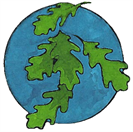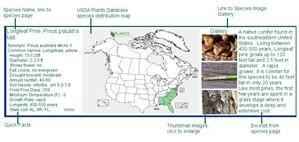

Forested acres: 25.5 million (2012)
Percent of total area forested: 27%
Predominant Forest Type(s): Douglas-Fir, Pine
Number of National Forests: 10
Number of State Parks: 54
Number of Tree city USA communities: 41
Number of invasive tree species: 1 (see state list for noxious/invasive plants)
Insects of Concern: Mountain Pine Beetle, Western Spruce Budworm
Pathogens of Concern: Root Diseases- Armillaria root disease, laminated root disease, annosus root rot
Number or Rare, Threatened or Endangered Species: NA
Number of tree families in our collection: 31
Sources:
Arborday.org
US Forest Service
Montana Fish, Wildlife, and Parks: Montana Outdoors
United States Department Of Agriculture, Natural Resources Conservation Services: PLANTS Database
Additional state resources:
Montana State Parks
Montana State University Extension Service
Percent of total area forested: 27%
Predominant Forest Type(s): Douglas-Fir, Pine
Number of National Forests: 10
Number of State Parks: 54
Number of Tree city USA communities: 41
Number of invasive tree species: 1 (see state list for noxious/invasive plants)
Insects of Concern: Mountain Pine Beetle, Western Spruce Budworm
Pathogens of Concern: Root Diseases- Armillaria root disease, laminated root disease, annosus root rot
Number or Rare, Threatened or Endangered Species: NA
Number of tree families in our collection: 31
Sources:
Arborday.org
US Forest Service
Montana Fish, Wildlife, and Parks: Montana Outdoors
United States Department Of Agriculture, Natural Resources Conservation Services: PLANTS Database
Additional state resources:
Montana State Parks
Montana State University Extension Service

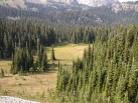
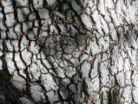
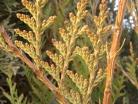
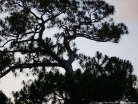
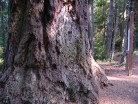

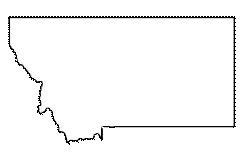
Image citation: ©1995 St. Mary's College of California,
The Big Sky State, 'Gold and Silver'
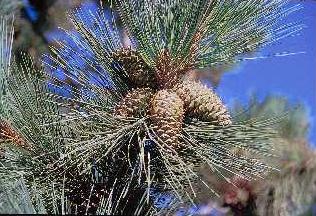
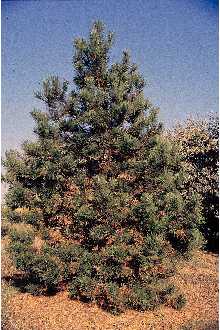
State Tree: Ponderosa Pine
Montana
Want to add your tree to our picture gallery? Click here for details!
-Color denotes a tree that is rare or endangered

We are part of the Hubpages community.
Click here for more info.
Click here for more info.
Native Trees of Montana
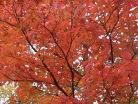



™

Custom Search

Tree lists:
•A-Z by scientific
name
•A-Z by common
name
•By Family
For state A-Z list click state name below.
•A-Z by scientific
name
•A-Z by common
name
•By Family
For state A-Z list click state name below.
Home>Browse by State>Montana
The landscape of Montana is beautiful
and captivating, and with 54 State Parks and 10
National Forests, there are plenty of ways to enjoy
the preserved greenery. As one might expect, the
forests of Montana are dominated with native
conifers like ponderosa pine, spruce, fir trees, and
high altitude decidous species like larch. Rivers and
streams are often lined with a mix of conifers and
white barked aspen while Douglas-fir trees creep up
the mountain sides. Generally speaking of the state
as a whole, roughly 66% of the forests are Douglas-
fir, lodgepole pine, or ponderosa pine types, there are
however, over 15 species of conifers native to Montana. With so many conifer species to
choose from, its no wonder the cities of Montana have embraced the evergreen benefits of
conifers by planting high numbers of urban trees. Over half the population of Montana live in
cities with Tree City USA designation.
While Douglas-fir and Ponderosa pine can typically be found throughout the state, there are
some regional differences in forest cover types and associated species. In northwest Montana
for example, nature lovers can walk among subalpine fir trees high in the mountains or venture
a little to the south and enjoy an abundances of alpine larch and white bark pine or western red
cedar in the valley bottoms.
Elevation also plays an important role in the forest types. The lower elevation foothills, for
example, are home to semi-arid grasslands where ponderosa pine grow in conjunction with
cottonwood trees. Higher up, ponderosa pines give way to lodgepole pines and the decidous
cottonwoods are replaced with larch. Higher still, whitebark pine is the dominate member of


Montana Native Tree Facts

Montana Native Tree Families and Genera
Useful information while browsing species:
• How to read a botanical name
• How to use our species boxes:
• How to read a botanical name
• How to use our species boxes:
Additional Resources:
North American Native Tree Families
North American A to Z List by Scientific Name
North American A to Z List by Common Name
North American Native Tree Families
North American A to Z List by Scientific Name
North American A to Z List by Common Name
click to enlarge.
-Color denotes a tree that is rare or endangered

Please note: This is not a complete list of all native tree families and species found in Montana. We are constantly working towards a more comprehensive list and will add families and their species as completed.
Follow the links to view species native to Montana. If the genus is not linked, species are listed on the family page.
Aceraceae, Maple
Betulaceae, Birch
Alnus, Alder
Betula, Birch
Caprifoliaceae, Honeysuckle
Cupressaceae- Cypress
Juniperus, Juniper
Thuja, Arborvitae
Aceraceae, Maple
Betulaceae, Birch
Alnus, Alder
Betula, Birch
Caprifoliaceae, Honeysuckle
Cupressaceae- Cypress
Juniperus, Juniper
Thuja, Arborvitae
Fabaceae, Pea
Gleditsia, Locust
Fagaceae, Beech
Quercus, Oak
Oleaceae, Olive
Fraxinus, Ash
Pinaceae, Pinus
Abies, Fir
Pinus, Pine
Pseudotsuga, Douglas-fir
Gleditsia, Locust
Fagaceae, Beech
Quercus, Oak
Oleaceae, Olive
Fraxinus, Ash
Pinaceae, Pinus
Abies, Fir
Pinus, Pine
Pseudotsuga, Douglas-fir
Rhamnaceae, Buckthorn
Rosaceae, Rose
Crataegus, Hawthorn
Salicaceae, Willow
Populus, Cottonwood
Salix, Willow
Ulmaceae, Elm
Ulmus, Elm
Taxaceae, Yew
Taxus, Yew
Rosaceae, Rose
Crataegus, Hawthorn
Salicaceae, Willow
Populus, Cottonwood
Salix, Willow
Ulmaceae, Elm
Ulmus, Elm
Taxaceae, Yew
Taxus, Yew

Montana Endangered or Threatened Tree Species
While there are a few plants species endangered or threatened in
Montana, there are no tree species of concern at this time.
Looking for a nursery near you?
Check out our nursery listing by county below!
Sorry, we do not currently have any tree nursery listings for this state. We do update these lists, so please check back.
Check out our nursery listing by county below!
Sorry, we do not currently have any tree nursery listings for this state. We do update these lists, so please check back.


An icon of western North America, Ponderosa pine was named the State Tree of Montana in 1949. The most widely distributed tree species of the west, Ponderosa pines are found on semiarid slopes or plataeu at elevations between 6,000 and 8,500 feet. Ponderosa pines are towering trees, regularly hitting the record books and recently taking the title of tallest pine in the world at a staggering 268.35 feet tall. Height ranges between 150 to 223 feet usually, but greater heights have been recorded at optimum sites. Trunk diameter is typically no larger than 4 feet. Ponderosa pines have a single trunk with rough scaly bark. When young, the bark is dark brown and matures into broad,irregular, reddish-brown to almost orange plates. The crown is broad and open when mature but younger trees have more of a pyramidal structure. ...Read more
Photo citation: USDA NRCS Database/ Herman D.E. et al. 1996. North Dakota Tree Handbook. USDA NRCS ND State Soil Conservation Committee; NDSU Extension and Western Area Power Authority, Bismark
the pine genus and grows with trees like Engelmann spruce, subalpine fir, and Douglas-fir, which grows at the highest elevation of all Montana native tree species.
There are numerous threats to the forests of Montana. Various root rot diseases, such as annosus root rot and armillaria root disease, affecting about 8 million acres according to the State's 2012 Forest Health Assessment. Other than pathogens, there are several insect pests being monitored throughout Montana. Mountain pine beetles, which appear to be on the decline, continue to cause mortality among the native and non-native pine species. Western spruce budworm is an insect pest found in almost all counties, which is on the rise, and causing widespread defoliation. Repeated heavy infestions east of the Continental Divide in particular, are severely impacting douglas-fir trees and other host tree species.
Montana's Department of Natural Resources and Conservation keeps a record of the largest trees in the state, seven of which are National or National Co-Champion trees. The western half of the state dominates the list of champion trees but Ravalli County in southwestern Montana holds more than any other with 27 state champions- 2 of which are also National Champions. The tallest tree in the state (as of the 2013 Big Tree List) is a 203 ft Engelmann Spruce in Sanders Co., followed by a ponderosa pine in Mineral Co. which stands 194 ft.
There are numerous threats to the forests of Montana. Various root rot diseases, such as annosus root rot and armillaria root disease, affecting about 8 million acres according to the State's 2012 Forest Health Assessment. Other than pathogens, there are several insect pests being monitored throughout Montana. Mountain pine beetles, which appear to be on the decline, continue to cause mortality among the native and non-native pine species. Western spruce budworm is an insect pest found in almost all counties, which is on the rise, and causing widespread defoliation. Repeated heavy infestions east of the Continental Divide in particular, are severely impacting douglas-fir trees and other host tree species.
Montana's Department of Natural Resources and Conservation keeps a record of the largest trees in the state, seven of which are National or National Co-Champion trees. The western half of the state dominates the list of champion trees but Ravalli County in southwestern Montana holds more than any other with 27 state champions- 2 of which are also National Champions. The tallest tree in the state (as of the 2013 Big Tree List) is a 203 ft Engelmann Spruce in Sanders Co., followed by a ponderosa pine in Mineral Co. which stands 194 ft.
- Trees
- A-Z scientific
- A-Z by Common Name
- Families
- Aceraceae Maple Family
- Anacardiaceae Sumac Family
- Annonaceae Custard Apple Family
- Aquifoliaceae Holly Family
- Arecaceae, Palm Family
- Betulaceae Birch family
- Bignoniaceae Trumpet Creeper Family
- Burseraceae Frankincense Family
- Caprifoliaceae Honeysuckle Family
- Chrysobalanaceae Coco-plum Family
- Cornaceae Dogwood Family
- Cupressaceae Cypress Family
- Cyrillaceae Cyrilla Family
- Ebenaceae Ebony Family
- Ericaceae Heath Family
- Fabaceae Pea Family
- Fagaceae Beech Family
- Hamamelidaceae Witch Hazel Ffamily
- Hippocastanaceae Horse Chestnut Family
- Juglandaceae Walnut Family
- Lauraceae Laurel Family
- Leitneriaceae Corkwood Family
- Magnoliaceae Magnolia Family
- Meliaceae Mahogany Family
- Moraceae Mulberry Family
- Myricaceae Bayberry Family
- Myrsinaceae Myrsine Family
- Myrtaceae Myrtle Family
- Nyctaginaceae Four Oclock Family
- Olacaceae Olax Family
- Oleaceae Olive Family
- Pinaceae Pine Family
- Platanaceae Plane Tree Family
- Polygonaceae Buckwheat Family
- Rhamnaceae Buckthorn Family
- Rosaceae Rose Family
- Rubiaceae Madder Family
- Rutaceae Rue Family
- Salicaceae Willow Family
- Sapindaceae Soapberry Family
- Sapotaceae Sapodilla Family
- Simaroubaceae Quassia Family
- Styracaceae Storax Family
- Symplocaceae Sweetleaf Family
- Theaceae Tea Family
- Tiliaceae Lindon Family
- Ulmaceae Elm Family
- Taxaceae Yew Family
- Yucca Family
- Browse by State
- Rare or Endangered Species
- Trees_with_Special_Uses
- Tallest and Biggest
- Noxious Weeds
- Causes
- About Us
- Our Stores


